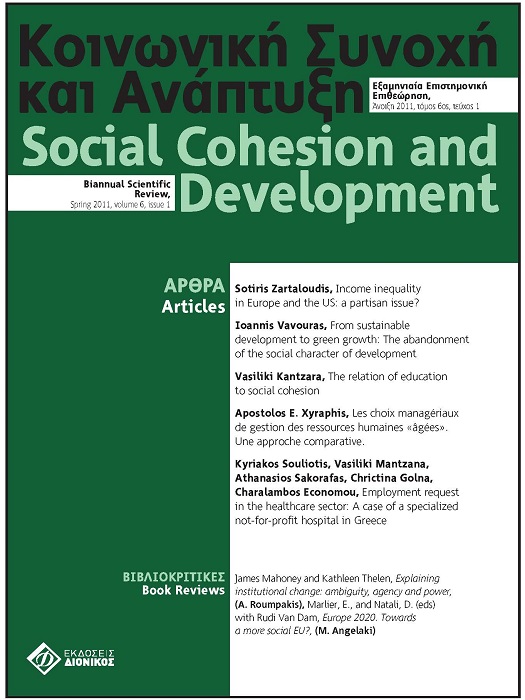Income inequality in Europe and the US: a partisan issue?

Abstract
This paper discusses the levels, trends and causes
of income inequality in Europe and the US. On
the one hand, it finds that although market
income inequality has generally risen, it did so
more in some countries and less in others. On
the other hand, disposable income inequality
has had a puzzling irregular development. The
latter is higher in the US, whereas in Europe
three clusters of countries exist: Mediterranean
and Central and Eastern European (CEE)
countries have the highest disposable income
inequality –with the UK being the only rich EU
country belonging to this group. Continental
Europe has medium to low inequality while the
lowest is found in the Scandinavian ones. The
only exceptions to this ranking are some of the
CEEs who belong to the group with the lowest
disposable income inequality. It is argued that
the best explanation for this classification and the
national disposable income inequalities’ history
is the different national public policy, that is,
national redistributive policies, different taxation
systems and social security contributions, which
stems from the political ideology of the ruling
party, the overall effectiveness and generosity of
redistributive policies.
Article Details
- How to Cite
-
Zartaloudis, S. (2016). Income inequality in Europe and the US: a partisan issue?. Social Cohesion and Development, 6(1), 5–25. https://doi.org/10.12681/scad.8971
- Issue
- Vol. 6 No. 1 (2011)
- Section
- Articles

This work is licensed under a Creative Commons Attribution-NonCommercial-ShareAlike 4.0 International License.
Authors who publish with this journal agree to the following terms:
- Authors retain copyright and grant the journal right of first publication with the work simultaneously licensed under a Creative Commons Attribution Non-Commercial License that allows others to share the work with an acknowledgement of the work's authorship and initial publication in this journal.
- Authors are able to enter into separate, additional contractual arrangements for the non-exclusive distribution of the journal's published version of the work (e.g. post it to an institutional repository or publish it in a book), with an acknowledgement of its initial publication in this journal.
- Authors are permitted and encouraged to post their work online (preferably in institutional repositories or on their website) prior to and during the submission process, as it can lead to productive exchanges, as well as earlier and greater citation of published work (See The Effect of Open Access).


